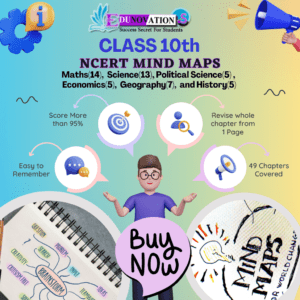Discover key findings from the smart city mobile application assessment India case study by IIMB, highlighting real-time impact, education access, and citizen services.
India’s ambitious Smart Cities Mission has undergone extensive evaluation in recent years. A critical aspect of this transformation is the deployment and assessment of smart city mobile applications, enabling real-time data tracking, efficient service delivery, and improved governance across urban India. The smart city mobile application assessment India case study, recently undertaken by the Indian Institute of Management Bangalore (IIMB), uncovers the realities behind the mission’s performance, revealing both progress and persistent challenges.
Understanding India’s Smart City Landscape
Launched in 2015, the Smart Cities Mission (SCM) aimed to modernize 100 Indian cities by integrating advanced digital infrastructure, mobility, housing, and citizen engagement. With funding of ₹1,00,000 crore from the central government and additional contributions from state governments, the initiative was envisioned as a model for urban transformation.
As of mid-2025, over 7,800 projects worth ₹1.81 lakh crore have been initiated, with more than 5,600 completed. However, the key question remains: how effective are the digital platforms, especially mobile applications, in facilitating citizen services?
Toppers Use Mind Maps to score more than 95%
-
NCERT Class 11th Commerce Mind Maps
Add to cartOriginal price was: ₹999.00.₹199.00Current price is: ₹199.00. -
NCERT Class 12th Chemistry Mind Maps
Add to cartOriginal price was: ₹199.00.₹75.00Current price is: ₹75.00. -
NCERT Class 12th Commerce Mind Maps
Add to cartOriginal price was: ₹999.00.₹199.00Current price is: ₹199.00. -
NCERT Class 12th Science Mind Maps
Add to cartOriginal price was: ₹999.00.₹199.00Current price is: ₹199.00. -
NCERT Mind Maps For Class 10th
Add to cartOriginal price was: ₹999.00.₹199.00Current price is: ₹199.00.
Purchase Today
Key Findings of the Smart City Mobile Application Assessment
A team at IIM Bangalore conducted a comprehensive field assessment across 47 smart cities, focusing on mobile application effectiveness. The smart city mobile application assessment India case study evaluated services such as grievance redressal, solid waste management, and real-time monitoring tools.
Core Parameters of Evaluation:
- User engagement & satisfaction
- Accessibility for marginalized communities
- Integration with physical infrastructure
- Cybersecurity and data privacy
- Real-time response efficiency
Key Insight: While over 60% of smart city apps showed improved engagement post-COVID-19, many still lacked robust multilingual support and real-time updates. Some apps were used only for basic grievances without offering advanced citizen dashboards or predictive tools.
Educational Impact: Smart Classrooms and Digital Literacy
The study also included a deep dive into the impact of smart classrooms on enrollment and dropout rates in India. Cities like Pune, Surat, and Bhubaneswar have introduced AI-enabled smart boards and real-time attendance monitoring.
Outcomes:
- 15–22% increase in school enrollment in digitally equipped municipal schools.
- Dropout rates among girl students in remote areas decreased by 30% post-installation of smart classrooms.
- Teachers reported improved lesson delivery and student engagement.
For in-depth resources on such educational reforms, refer to NCERT Courses and our curated Syllabus section.
Real-Time Monitoring: Safety & Urban Security
The real-time smart city tracking systems reducing crime against women emerged as a vital theme. Integrated Command and Control Centers (ICCCs) in cities like Bhopal and Vadodara have deployed over 2,500 AI-powered cameras to monitor public spaces.
Impact Observed:
- 40% reduction in street harassment complaints in CCTV-enabled zones.
- Panic button features in mobile apps reported over 10,000 activations in 2024.
- Real-time data helped law enforcement in reducing response time to under 5 minutes.
To explore further educational content and safety awareness, visit Videos Section and Mind Maps.
Enhancing Citizen Services via Digital Platforms
A major takeaway from the IIMB study was how smart city apps improve citizen services like grievance redressal, streetlight management, waste pickup, and water complaints.
Most Popular App Services:
- 24/7 Grievance Reporting
- Garbage Truck GPS Tracking
- Electricity Fault Tracking
- Online Building Permission Portals
However, data security challenges in smart city mobile app adoption India remain a concern. Less than 40% of the apps assessed were compliant with strong encryption standards or data protection laws like India’s Digital Personal Data Protection Act, 2023.
Challenges in Smart City Mobile App Ecosystem
While the technological push is commendable, the smart city mobile application assessment India case study found several persistent issues:
Key Challenges:
- Digital divide: Access to smartphones and internet in Tier-3 cities remains below 40%.
- Low app retention rates: Many apps had high download numbers but <20% active usage.
- Cybersecurity lapses: Several apps lacked updated SSL certificates and secure APIs.
- Language barrier: Few apps supported regional languages effectively.
Expert comment:
Dr. Ravi Shankar, Professor of Urban Policy at IIT Delhi, said,
“India’s digital urban agenda is promising, but unless citizen-facing tools become universally accessible and secure, they risk becoming just symbolic gestures rather than transformative tools.”
Recommendations and Way Forward
The IIM Bangalore team has made several recommendations to bridge the policy-to-practice gap:
- Build centralized app development frameworks to avoid fragmented digital ecosystems.
- Ensure all mobile applications undergo annual security audits.
- Promote regional language support and offline functionalities.
- Integrate AI and predictive analytics for proactive governance.
Linkages with National Education and Awareness Campaigns
The findings align with efforts from the Ministry of Education and NCERT to enhance digital literacy and data citizenship in schools. To support your academic journey, explore:
Need Smart Solutions for Schools?
For institutions looking to develop secure and user-friendly digital platforms, Mart India Infotech offers tailored solutions for school websites, mobile apps, and secure portals.
Conclusion
The smart city mobile application assessment India case study provides critical insights into the evolving landscape of urban governance in India. While digital infrastructure is steadily growing, the study emphasizes the importance of secure, accessible, and inclusive digital tools to truly empower citizens.
Only when smart applications are designed with end-users in mind, especially underserved communities, can India achieve its vision of smart, inclusive, and resilient cities.
🔍 FAQs
- What is the smart city mobile application assessment India case study about?
It evaluates mobile app effectiveness across 47 Indian smart cities for services like grievance redressal and safety. - Which cities were included in the study?
Cities like Pune, Surat, Bhopal, Bhubaneswar, and Vadodara were part of the assessment. - How do smart city apps help in reducing crime?
Real-time monitoring and AI-enabled surveillance have helped reduce crime in CCTV-covered areas. - What challenges were identified in smart city mobile app adoption?
Key issues include digital divide, cybersecurity lapses, and low active usage rates. - How have smart classrooms impacted education in India?
They’ve led to increased enrollment and reduced dropout rates, especially among girls. - What are the key recommendations from IIMB’s assessment?
Centralized app development, security audits, and regional language support were among the suggestions. - How can citizens benefit from these apps?
They can report issues, track services, and access emergency assistance in real time. - What security issues do smart city apps face?
Many apps lack SSL encryption, strong API security, and regular audits. - Are these apps accessible in regional languages?
Most apps struggle with multilingual accessibility, limiting outreach. - Where can students access more resources related to digital education?
They can visit platforms like Edunovations Notes and Syllabus.





